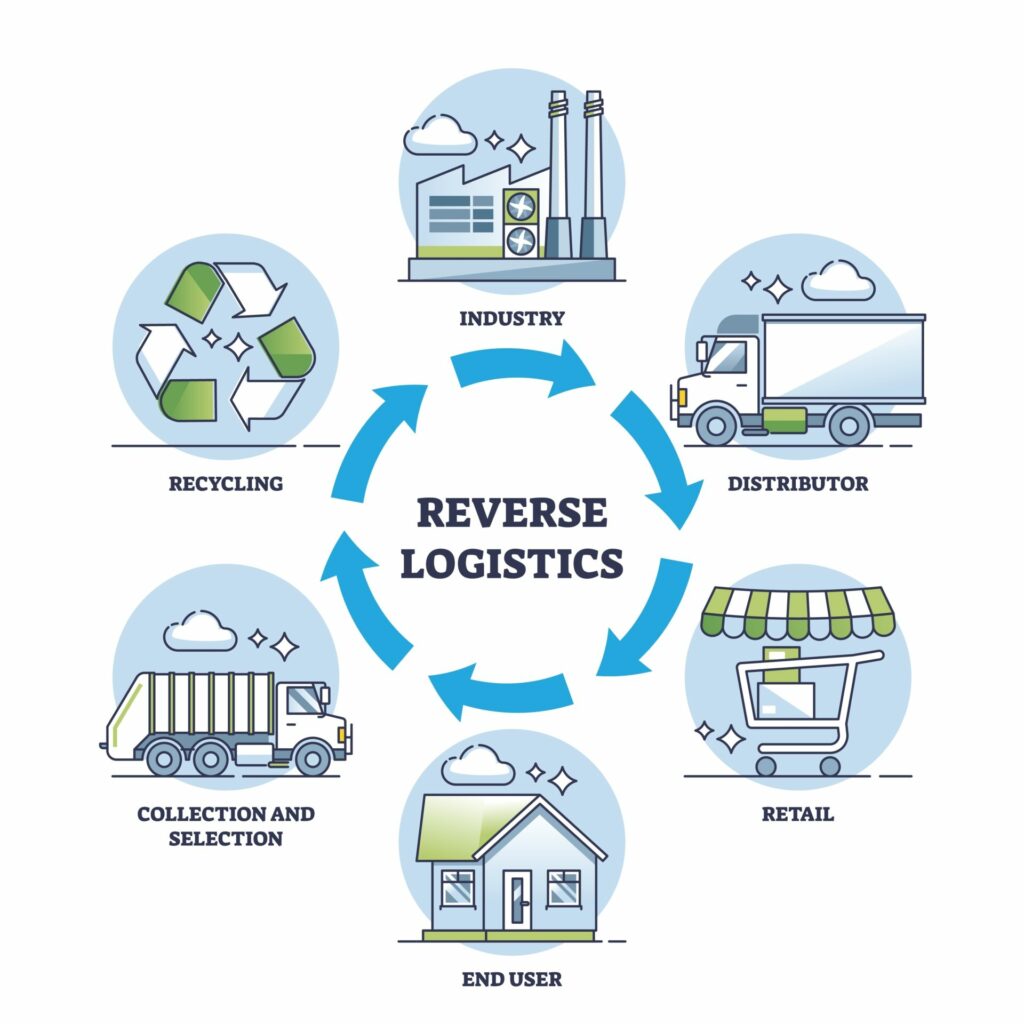International shipping. For many brands, this subject can bring forth a visceral reaction. Maybe a cringe, an eye roll, or even a shudder…

Why? Shipping internationally is a huge undertaking for brands, not to mention how costly it can become for both themselves and their customers.
But, what if we told you it doesn’t have to be so scary?
As long as you have all of your ducks in a row, shipping internationally should be a relatively smooth process.
Of course, there may be additional costs that pop up and a package or two that needs to be reassessed, but so long as your brand is prepared to have the right documentation in place, international shipping can be hassle-free.
And, with international shippers having around 12% more volume than brands who only ship domestically, it’s worth looking into to generate more sales.
Let’s dive in.
What is international shipping in e-commerce?
In short, international shipping (also known as ) is moving products from one country to another – crossing borders in the process. Simple, right? Not quite… there are a lot of moving parts that your business has to coordinate.
Not only do your packages have to be cleared by customs on the way in and out of an international destination, but there are also duties and taxes to take care of.
Customs clearance
Customs is the government service responsible for overseeing international trade laws and making sure that all inbound shipments comply with a country’s regulations.
Whenever you ship internationally, you’ll need to take a few extra steps to ensure that your package is prepared to speed through the customs clearance process. This means understanding what documents are needed at your package’s destination (like a commercial invoice or an export list),
Without the correct paperwork, your products will end up right back where they started – at the warehouse. And, you’ll have one very unhappy customer who hasn’t received their purchase!
Additional costs of cross-border fulfillment
If you’re an avid online shopper, it’s quite possible that you’ve asked something similar to the below questions (maybe with a few more swears in the mix).
“Where did all these costs come from?!”
“You’ve got to be kidding me – I thought I paid for this already!”

Perhaps one of the most negative customer experiences is to be hit with a ton of taxes and duties to pay post-purchase. This is called Delivery Duty Unpaid (DDU), and it prevents customers from receiving their product until the fees are paid.
For a smooth and hassle-free customer experience, companies can choose to be responsible for any tax and duty fees – it just means that they’ll have to cover these costs in advance with Delivery Duty Paid (DDP) shipping.
“DDP shipments are a little bit more expensive upfront because the duties and the taxes are charged in the cart. But the experience is really a great one because there are no surprises of the door. It’s all cleared already when it gets to the country. So it just travels straight to the customer’s door and there are no delays, no extra fees or payments.”
Alex Yancher, Co-Founder and CEO of Passport Shipping
3 international shipping myths
Just like anything that’s more than a bit complicated, there are a number of tall tales surrounding international shipping. Hold tight, we’re going to bust a few of the top ones:
1. If it can be sold in the US, it can be sold anywhere.
Hmmm, this isn’t quite right.
In fact, the US has one of the most relaxed regulations when it comes to exporting and receiving products. Did you know that the FDA only bans 11 chemicals whereas Canada bans over 500 and the EU over 2,000? Yes, you read that right!
Let’s put this into perspective. Ever tried Crest White Strips? If you live in Europe, you may be out of luck. The concentration of hydrogen peroxide in these strips exceeds allowable levels in the EU.
Lesson learned: Always check your package’s origin-destination to see what regulations they have and determine if your product is eligible for cross-border fulfillment.
2. I can just claim my international shipments as a dollar, right?
Nope! Declaring shipments at a lower value than what they’re worth is a big mistake, even if the product is just a sample or a replacement. For custom purposes, everything has value, even the small stuff.
And, how you value your products matters. Many brands have received huge bills from customs for under-valuing their shipments.
Sure, you might be able to get away with it for a few months, but its likely that customs will eventually figure it out and charge a fine or seize your goods.
Lesson learned: Be honest with your shipment value. It’s a vital number that clears your goods and determines duties and taxes – if it’s off, your company could pay a costly price, and your customers could be left empty-handed.
3. If I’m shipping to Canada, I should register as a company in Canada and have French labeling.
False! This is old advice. Traditionally, the advice was for merchants to register as an NRI (non-resident importer). However, this process is geared mostly towards bulk B2B shipments.
For D2C shipping, it’s an entirely different playing field.
Brands have found that it’s more beneficial to stay as an American company shipping to an international customer who becomes the importer. (don’t worry – they won’t have to fill out any forms.)
Lesson learned: Don’t overthink it. If you’re shipping internationally, you likely won’t have to do much other than make sure you have the right documentation – no need to register as another company or go overboard with languages on packaging.
Where to begin when shipping internationally
Alright, with a few myths out of the picture – maybe you’re feeling a bit more confident in shipping internationally. See? It isn’t so scary. But – where to start?
Research, research, research.
You’ll want to determine whether there’s a need for international shipping before you dive into the process. Track your shop’s demand – what products are shipping most, and where?
The numbers won’t lie, and you’ll be able to fuel your shipping strategy with actual data – no guessing games.
Start small and stay close.
When first dabbling in cross-border fulfillment, it’s important to set realistic expectations for both you and your customers. Instead of shipping to the ends of the earth right off the bat, are there any international markets that aren’t so far away? Hint, hint: Canada!
In addition to choosing nearby destinations, start with products that are smaller – it’s much more cost-effective to ship these items rather than heavy, bulkier products.
Consider partnering with a 3PL.
Partnering with an ecommerce fulfillment provider who has experience shipping internationally might be the best bet for businesses who are looking to break into the cross-border scene.
Depending on the 3PL, online merchants can take advantage of negotiated carrier rates, specialized in ecommerce, expertise in packaging, and even handling of customs documentation.
Should ecommerce brands offer international shipping?
The fact of the matter is, thanks to technology, online stores are more reachable now than they’ve ever been before.
Shoppers can purchase products directly from their phones at any given moment, and social media platforms like Instagram and TikTok have created a space for brands to go viral at any moment – gaining visibility and traction worldwide.
So, what does this mean for?
Well, cross-border shipping has become a customer expectation. Not only that, customers are looking for seamless shipping and a straightforward process with no hidden fees.
Without an experience that meets customer expectations, you can say goodbye to a loyal fanbase – and say hello to high .

All of this to say: it’s important to understand your audience’s needs before diving into offering cross-border fulfillment. Take a look at the data and let it pave the path for your fulfillment strategy – then, remember to stay away from those pesky myths!
The verdict? If you have a large international following, and you’re looking to expand your reach cross-borders, you should be developing an international shipping strategy that gives your customers the best experience, every time.
Want to find out more about international shipping? Check out Episode 19 with Alex Yancher from Passport Shipping – covering all the ins and outs of cross-border fulfillment.




